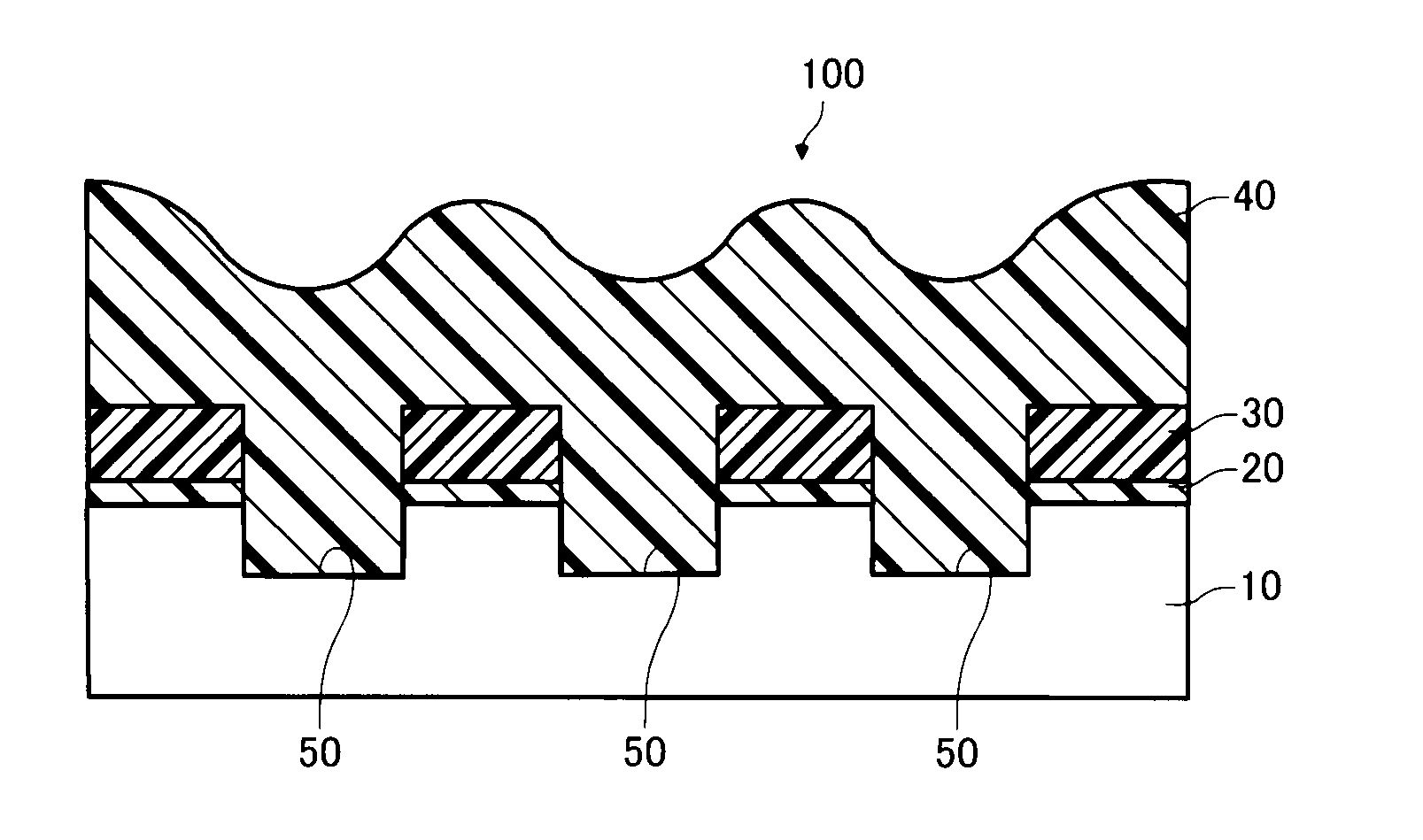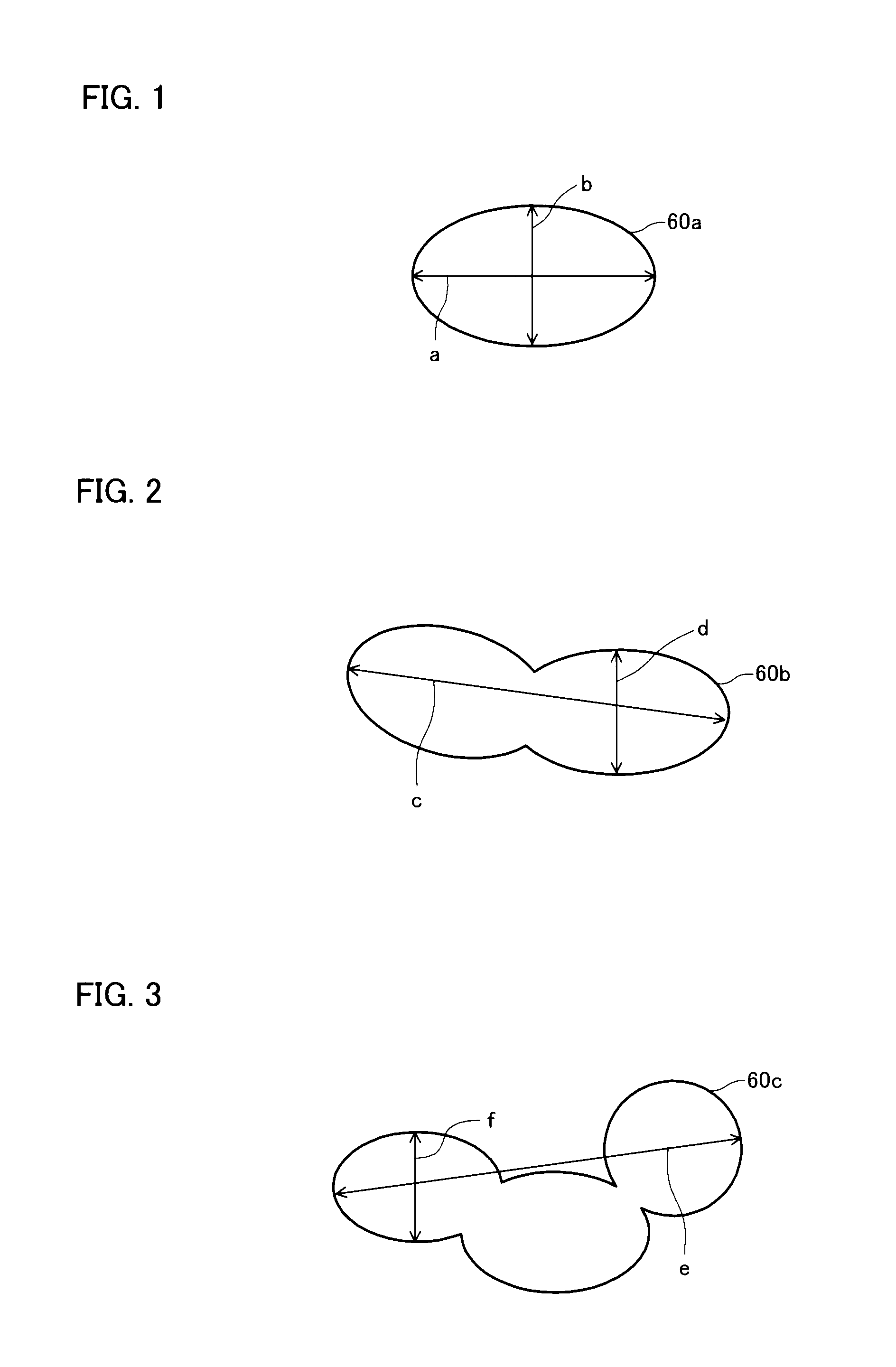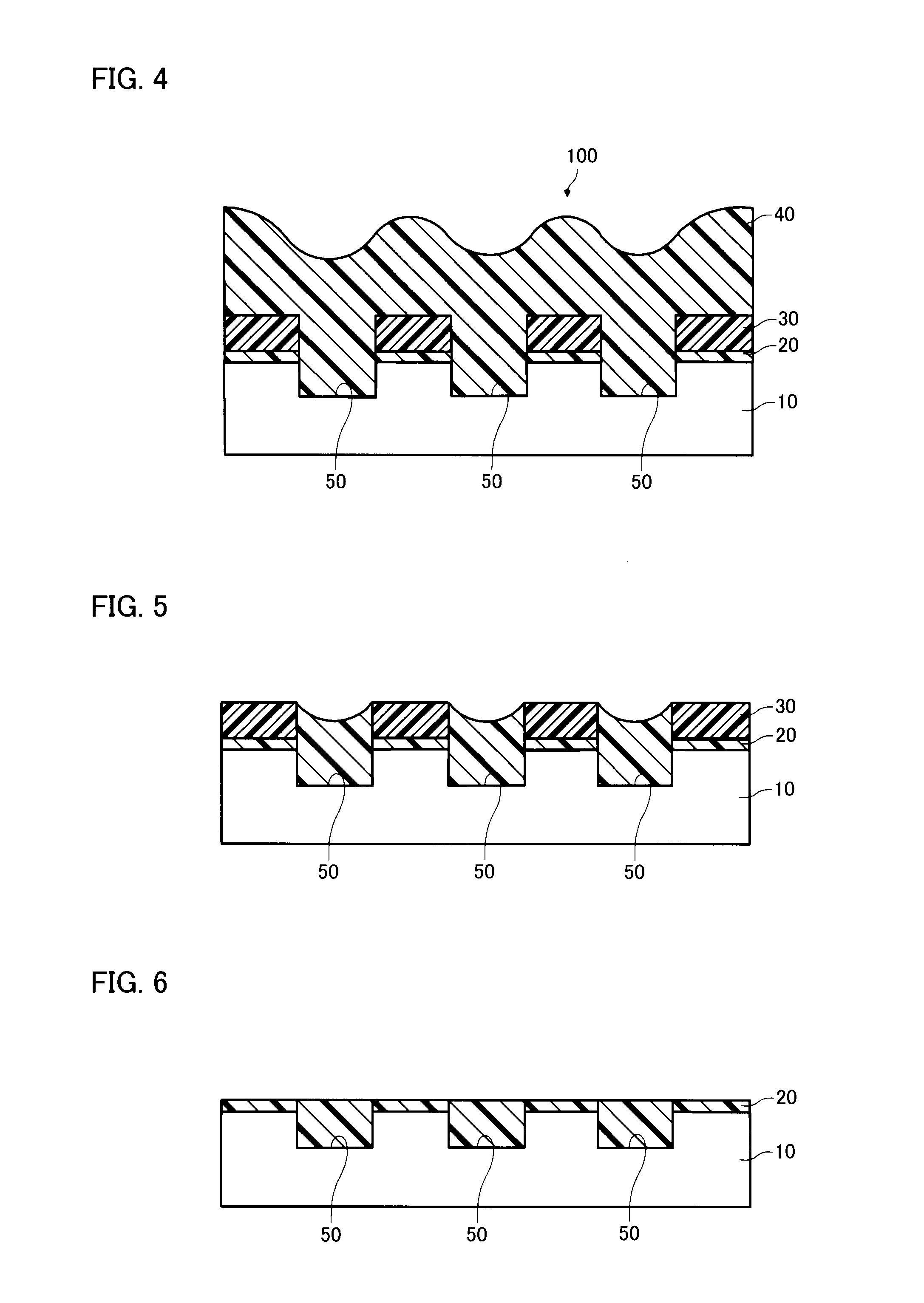Aqueous dispersion for chemical mechanical polishng and chemical mechanical polishing method for semiconductor device
a technology of chemical mechanical polishing and aqueous dispersion, which is applied in the direction of polishing compositions with abrasives, chemistry apparatus and processes, and other chemical processes, can solve the problems that the polishing aqueous dispersions cannot achieve a polishing rate ratio sufficient for practical applications, and the silicon nitride film may remain or the lower layer of the silicon nitride film may be damaged, etc., to achieve the effect of increasing the polishing rate of silicon oxide film
- Summary
- Abstract
- Description
- Claims
- Application Information
AI Technical Summary
Benefits of technology
Problems solved by technology
Method used
Image
Examples
examples 1 to 19
3.4 Examples 1 to 19 and Comparative Examples 1 to 12
[0105]In Examples 1 to 19 and Comparative Examples 1 to 12, the component or the concentration of the chemical mechanical polishing aqueous dispersion was changed as shown in Tables 1 to 3. The test results are also shown in Tables 1 to 3.
[0106]The chemical mechanical polishing aqueous dispersions of Examples 1 to 14 contained the colloidal silica particles of which the ratio of the major axis to the minor axis was greater than 1.3. The polishing rate ratio of the silicon nitride film to the silicon oxide film achieved by the chemical mechanical polishing aqueous dispersions of Examples 1 to 14 was sufficiently greater than 10. Therefore, the silicon nitride film can be selectively polished by chemical mechanical polishing using each of the chemical mechanical polishing aqueous dispersions of Examples 1 to 14.
[0107]The chemical mechanical polishing aqueous dispersions of Examples 15 to 19 contained the colloidal silica particles o...
first experimental example
3.5.1 First Experimental Example
[0119]A test wafer in which a silicon nitride film was embedded was chemically and mechanically polished. Specifically, a test wafer “864CMP” (manufactured by Advanced Materials Technology Inc., the test wafer had a cross-sectional structure illustrated in FIG. 7, in which the thickness from the bottom of a polysilicon film 12 to the top of a silicon nitride film 32 was about 500 nm, the thickness of a first silicon oxide film 22 was about 10 nm, and the thickness of the silicon nitride film 32 was about 150 nm) was used as a polishing target 200.
[0120]The test wafer was preliminarily chemically and mechanically polished for 150 seconds under following “Polishing conditions 2” using “CMS4301” and CMS4302 (manufactured by JSR Corporation).
[0121]Polishing apparatus: “EPO-112” manufactured by Ebara Corporation
Polishing pad: “IC 1000 / K-Groove” manufactured by Rodel Nitta
Chemical mechanical polishing aqueous dispersion supply rate: 200 ml / min
Platen rotatio...
second experimental example
3.5.2 Second Experimental Example
[0127]A test wafer in which a silicon nitride film was embedded was chemically and mechanically polished. Specifically, a test wafer “864CMP” (manufactured by Advanced Materials Technology Inc., the test wafer had a cross-sectional structure illustrated in FIG. 10, in which the thickness from the bottom of a silicon film 14 to the top of a silicon nitride film 32 was about 500 nm, the thickness of a silicon oxide film 22 was about 10 nm, and the thickness of the silicon nitride film 32 was about 150 nm) was used as a polishing target 300.
[0128]The test wafer was preliminarily chemically and mechanically polished for 100 seconds under the above “Polishing conditions 2” using CMS4301 and CMS4302 (manufactured by JSR Corporation).
[0129]A silicon oxide film 42 formed on the silicon nitride film 32 was almost completely removed by chemical mechanical polishing, as illustrated in FIG. 11. The thickness of the silicon oxide film 42 formed on the silicon nit...
PUM
| Property | Measurement | Unit |
|---|---|---|
| particle size | aaaaa | aaaaa |
| pH | aaaaa | aaaaa |
| mass ratio | aaaaa | aaaaa |
Abstract
Description
Claims
Application Information
 Login to View More
Login to View More - R&D
- Intellectual Property
- Life Sciences
- Materials
- Tech Scout
- Unparalleled Data Quality
- Higher Quality Content
- 60% Fewer Hallucinations
Browse by: Latest US Patents, China's latest patents, Technical Efficacy Thesaurus, Application Domain, Technology Topic, Popular Technical Reports.
© 2025 PatSnap. All rights reserved.Legal|Privacy policy|Modern Slavery Act Transparency Statement|Sitemap|About US| Contact US: help@patsnap.com



